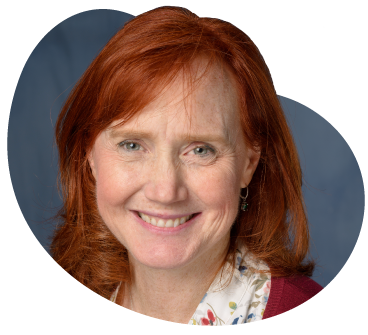Siobhan Malany is a member of the Life Sciences Cluster. As president at Micro-gRx, she applies her knowledge of space and chemistry to advance medical treatments and therapies by studying the effects of extraterrestrial environments on the human body.
Read on for highlights from her interview with us about Micro-gRx, her entrepreneurial journey and thoughts on what it will take to foster a more diverse innovation community in Central Florida.
What inspired you to create Micro-gRx?
In 2011, I moved from San Diego to Orlando to work in the Florida High Tech Corridor region’s growing Medical City at Lake Nona. I scored a ticket to watch the STS-134 launch, the second to last Space Shuttle Endeavor launch at the Kennedy Space Center. It was a middle-of-the-night event and to stay alert I engaged in a lively discussion with a professor involved with science payloads. He invited me to a workshop where students presented results from suborbital flight experiments and technology specialists talked about the equipment they intended to place on the International Space Station – like a microtiter plate reader, something I used every day in my drug discovery research. I realized then that I had the capability to follow a path into space technology. Things started to connect in my head, and this discussion triggered a new direction for me in how to seek funding for my projects to study cell biology in space for the benefit of life on Earth.
How did you get started in this field?
I won a space research competition sponsored by Space Florida in 2012 to send an experiment to the International Space Station. There was no funding, and the experiment had to fit inside a 10cm x 10cm x 12 cm cube. I conducted a biochemical experiment in microtiter plates that have 384 wells (miniature test tubes). The experiment produced fluorescence when two proteins were bound together. The experiment was tested in the plate reader on the ISS and calibrated the fluorescent mode of the reader. The experiment launched on Space X CRS-4. The plates were supposed to have been tossed out at the end of the experiment, but Kate Rubins kept the plates to practice pipetting liquid into the wells because this was the same time the first DNA polymerase chain reaction (PCR) experiments were being introduced on the ISS. After that experience, I sought a way to study human 3D cell systems in space to understand the effect of microgravity on tissues and organs and whether the effect is like aging but accelerated.
What is your favorite part of this job?
Being part of the conversation about creating a space economy in lower earth orbit (LEO).
Why Florida? How has the local innovation ecosystem supported your business growth?
It’s all about Florida. It was a combination of pure curiosity and being in the vicinity of Kennedy Space Center that triggered my career in space research. Space Florida provided me seed funding through the Florida-Israel Innovation program, and the Florida High Tech Corridor gave me a voice.
How has your involvement as a Cenfluence Cluster Member impacted your business?
Cenfluence is providing a foundation to grow in Central Florida. Amy Beaird has been amazing in providing outlets to investigate growing the company image and opportunity. In my recent grant to the National Science Foundation, I used the company’s involvement in Cenfluence to discuss the broader impacts of funding.
What advice do you have for other entrepreneurs?
Lobby for what you need to be successful, find the best people to work with and hire smart people.
How would you describe the state of diversity in Central Florida’s tech industry?
The tech industry is the fastest-growing industry and Cenfluence has showcased the rising number of tech startups in Central Florida. However, there are challenges women face in the industry. As with any rapidly evolving industry, women entrepreneurs need to continuously create strong collaborations internally and externally to their focus areas. On the other side of the coin, venture capitalists and funding agencies need to continuously diversify their portfolios to provide equal opportunity to women-owned businesses and female principal investigators.
What does Women’s History Month mean to you?
It means that we need to continuously reach out and bring women to the forefront of our fields.
###
Interested in joining Cenfluence as a Cluster Member? Your company will have an opportunity to engage with the Cluster Team, whose mission is to connect you with and leverage available public and private assets of the region to advance your company’s interests. If your company’s activities are related to one or more of the following Clusters, we encourage you to join Cenfluence and to complete the simple application process for becoming a formal Cluster Member.
Receive email updates on news, events, Cluster Members, opportunities and solicitations delivered to your inbox. Subscribe to our Newsletter.

